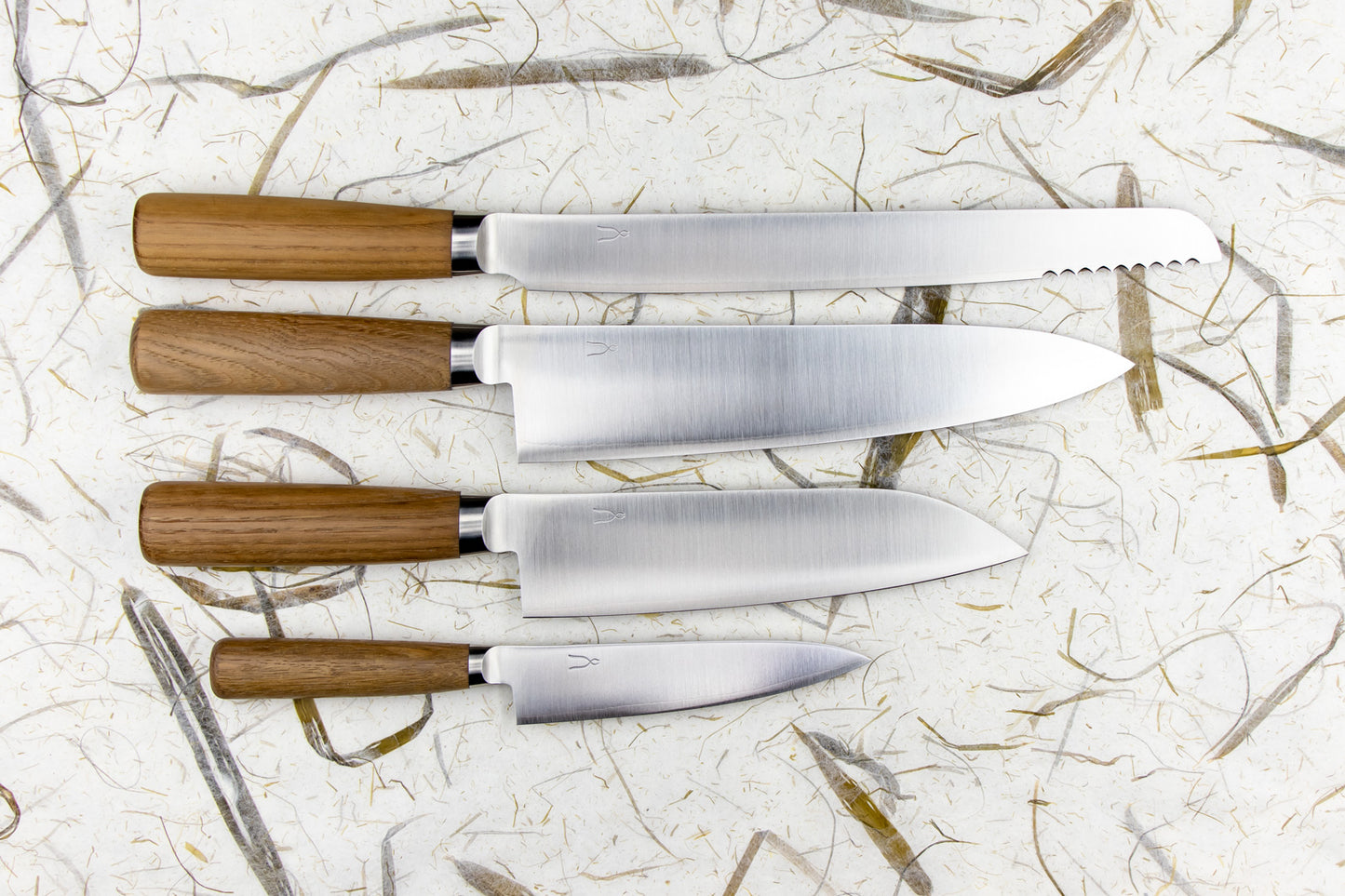Tadafusa Hocho Kobo 4 Piece Knife Set
Tadafusa Hocho Kobo 4 Piece Knife Set
Couldn't load pickup availability
Tadafusa knives are manufactured in the city of Sanjo, part of the Niigata prefecture. Not only known as a traditional centre for tool and knife forging, but also for the finest sake Japan has to offer. Great booze AND knives? Let’s go! The core of the blade is made from a hard SLD steel but is clad in softer stainless steel. The softer, stainless steel acts like a cushion and protects the harder steel.
These Tadafusa knives were developed by Fumie Shibata, a female industrial designer who sought out input from the female perspective. They feature a tapered tang for a great balance, the handle is made from semi-charcoaled chestnut wood which helps make it very sanitary and corrosion resistant, and no, they aren’t just for ladies.
Set contains
For small jobs, or if you just like a smaller knife.
Santoku means "three virtues". Slicing, dicing, chopping or meat, fish, veggies. This knife does it all.
Because pre-sliced bread is for the weak.
The classic chef's knife. Gyuto means "cow sword", cool huh?
| Shape | |
|---|---|
| Steel Type |
Rust Prone ⓘ
This knife can rust, click to learn more.
|
| Rockwell Hardness | 60 - 62 |
| Handle | Western Handle - Chestnut |
| Knifeline | Tadafusa Hocho Kobo |
| Made in |
Knife Care
Knife Care
Shipping and Returns
Shipping and Returns
We aim to ship your order within 1 business day at Knifewear, if there is a hold up, we'll aim to let you know and give you a timeline.
We offer $3 shipping on orders over $100* anywhere in Canada and $200* to customers in the USA. We ship worldwide, and offer up to the minute rates from our shipping partner DHL.
*Konro Grills and some other larger items are excluded from the free shipping offer.
How do I make a return on an online order?
No worries, we've got you sorted. Head over to https://knifewear.com/returns and follow the prompts.
Can I pick up my order Curbside / At the store?
Absolutely, as long as all the items you are looking for are in stock at the location you want to pickup from, you'll be able to select that at the checkout. If one or more items aren't at your preferred location we are happy to ship it to you.
Request Additional Info
Request Additional Info


